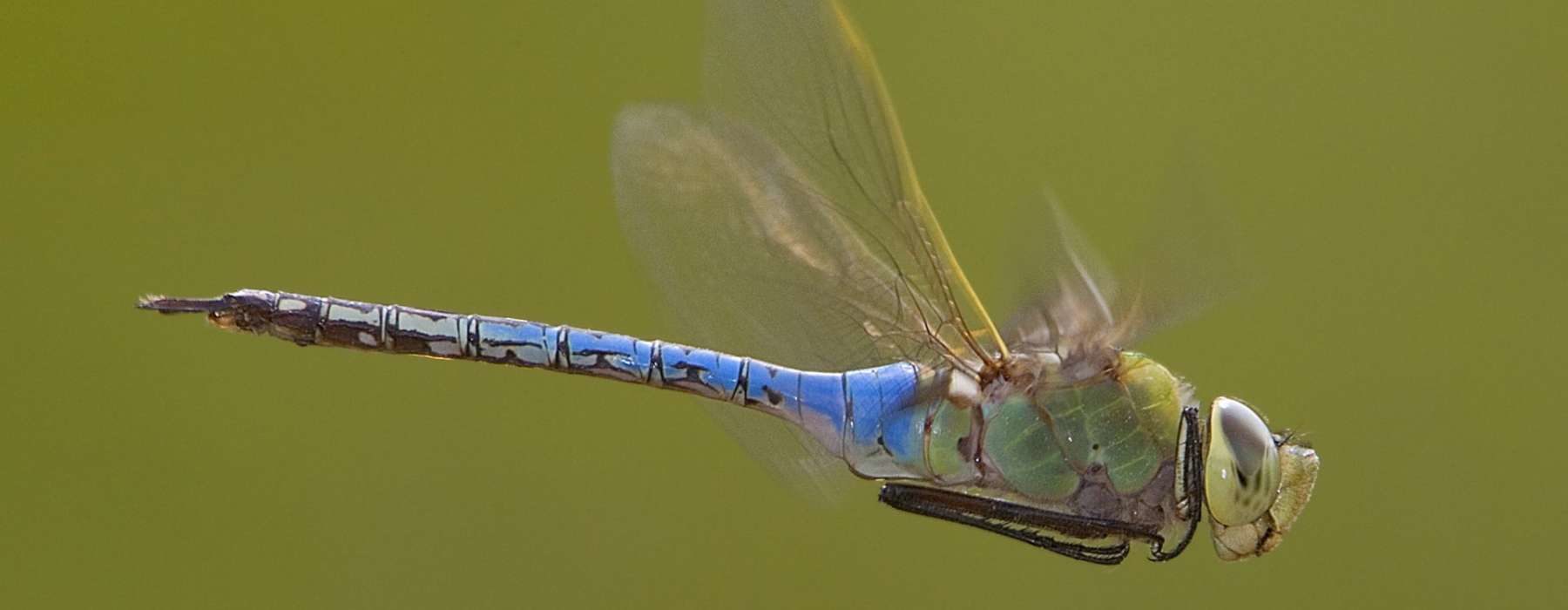The first Common Green Darners to arrive in Vermont this spring on their northward migration were actually seen in the far northern part of the state. They arrived later than expected, but they’re finally here!
The adults were first observed in Missisquoi National Wildlife Refuge by VCE’s own Nathaniel Sharp on May 18th, 2022. The Vermont Atlas of Life team had been tracking their migration north for weeks. Individuals were reported well into Ontario long before being reported in Vermont. Did they evade detection in the Northeast, or had they simply not arrived? Nathaniel’s observation may seem odd, but it helps us piece together the routes individual dragonflies use to reach the Northeast. Tracking Common Green Darner observations with the help of community scientists this spring has produced more questions than answers. I have a few hypotheses that may explain why they were seen in Canada before New England and why it may not be all that surprising the first observation was in the northern part of the state. Time and more data, the two highest hopes of any science project, could allow us to tease apart the mysteries of dragonfly migration. For now, we can marvel at their ability to migrate hundreds of miles, fueled only by mosquitoes, to a place they have never seen before.
The first wave of adult Darners that reached Vermont all came from water bodies much further south, possibly Florida or somewhere in the Caribbean. Their journey north may have taken up to seven weeks, but they are finally here, and will be laying eggs in water bodies across the state. For these early arrivals, their role in the specie’s long migration is just about finished. Time is not on their side. If they’re lucky, their young will emerge in September, giving rise to the second generation that migrates back south. But before that cohort ecloses, last summer’s dragonflies, who have been hunting our ponds for nearly a year, will take to the air. This cohort grew in the previous summer and fall until the water got too cold to continue development. They then entered a state of diapause, a sort of hibernation and pause in development, until water temperatures started rising this spring. For about a month, the migratory generation and the local adults will fly together. However, by August, all adults you see will have eclosed from ponds somewhere in the north.
The local cohort leaves clues behind when they eclose. These clues can help us better understand where and when they first stretched their wings. Want to get involved and help us better understand dragonfly migration? Keep an eye out around pond edges for the exoskeleton nymphs leave behind. Looking for them is fun, and they’re easier to photograph than adults. Tall vegetation, rocks, and stumps around pond edges are great places to find these little treasures. Counting and documenting exuviae, or nymph exoskeletons, will help us better understand when the changing of the guard takes place in the Northeast, changing from migratory individuals to those that eclosed locally. Be sure to submit your observations of adults and any exuviae you find to iNaturalist.org.







